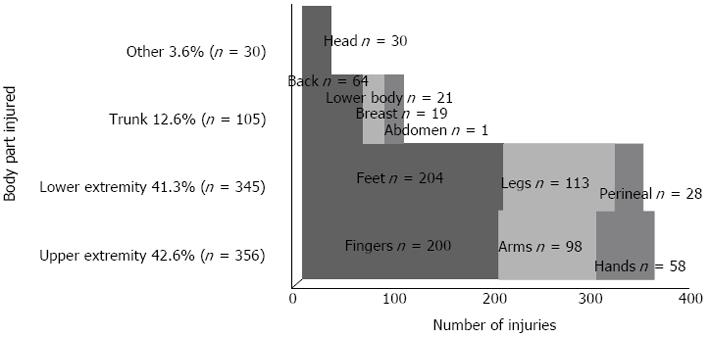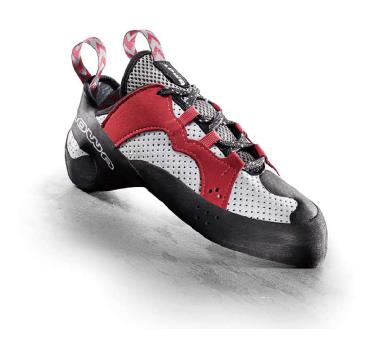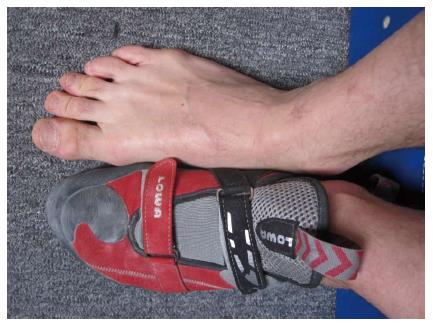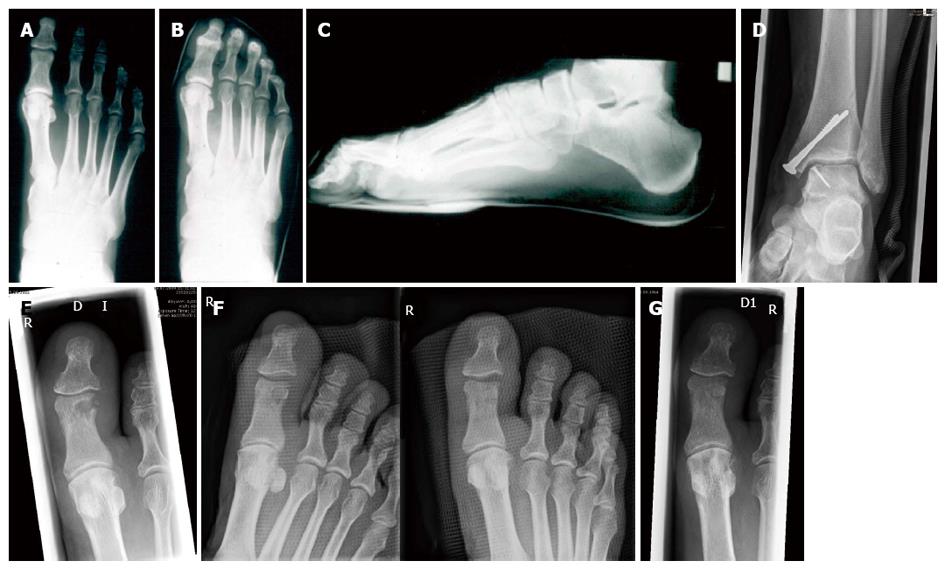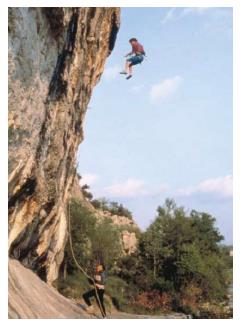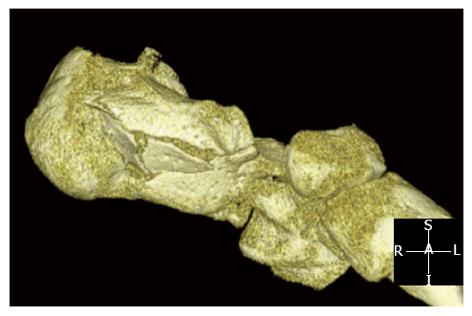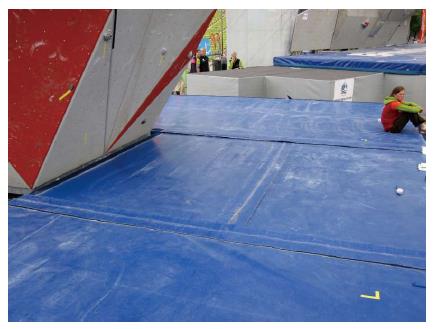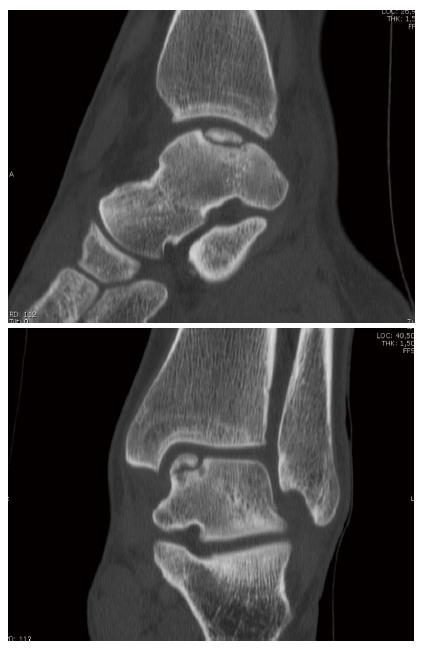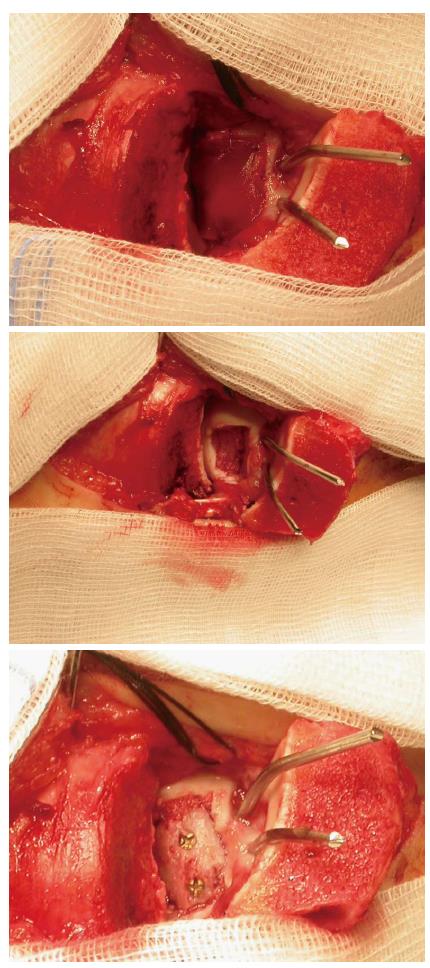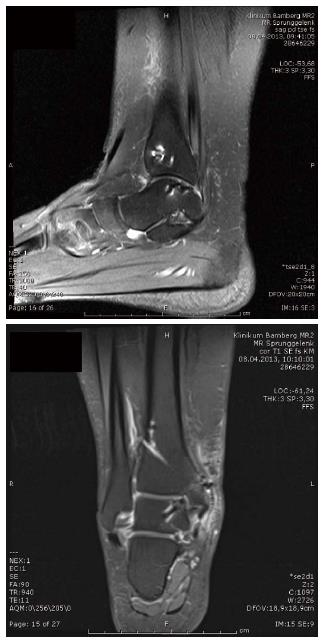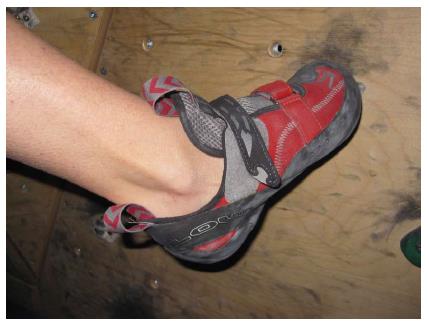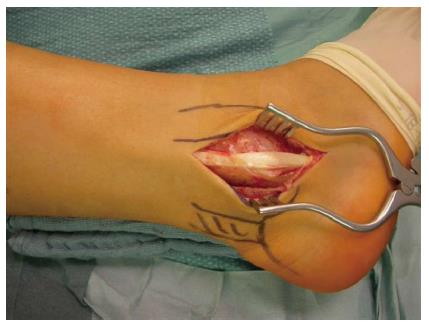Copyright
©2013 Baishideng Publishing Group Co.
World J Orthop. Oct 18, 2013; 4(4): 218-228
Published online Oct 18, 2013. doi: 10.5312/wjo.v4.i4.218
Published online Oct 18, 2013. doi: 10.5312/wjo.v4.i4.218
Figure 1 Distribution of Injuries by body part.
Figure 2 Modern climbing shoe.
Figure 3 A standing climber’s barefoot and while wearing climbing shoes.
Figure 4 X-ray.
A: Climber’s bare foot while standing; B: Same subject’s foot in climbing shoe. Note “crimping” toes and hallux valgus position of the large toe; C: Lateral plane of the same foot in a climbing shoe-note that the forefoot does not rest on the head of the metacarpalia 1 and 5 as normal but on the crimping toes; D: Post surgery (Case 1); E: Subchondral bone cyst in a 42 year old female climber causing chronic pain within the climbing shoes; F: After removal of the cyst and iliac crest bone graft using the OATS®; G: Osseous integration after 3 mo.
Figure 5 Wall-collision fall.
Figure 6 Calcaneus fracture after a ground fall (Computed tomography scan).
Figure 7 The same patient as above after surgery.
Figure 8 Closed mattress intersections at the International Federation of Sport Climbing Bouldering World Cup Munich 2011.
Figure 9 Computed tomography scan of a 20 year old female climber with osteochondritis dissecans of the medial talus shoulder.
Figure 10 Medial talus shoulder reconstruction with iliac crest implant and associated autologous chondrocyte transplantation
Figure 11 Magnetic resonance imaging 3 mo after the procedure.
The bone graft is integrated, the cartilage graft intact and osteotomy closed.
Figure 12 Typical climbers foot position which transfers a high load onto the peroneal tendons retinaculum.
Figure 13 Peroneal tendon dislocation through climbing.
Figure 14 Feet injuries.
A: Pressure marks on the toes due to tight climbing shoes; B: Subungual hematoma caused by tight climbing shoes; C: Hallux valgus in a 20+ year long climber.
Figure 15 Chronic Feet Problems in Long time high ability rock climbers (n = 30)[78].
- Citation: Schöffl V, Küpper T. Feet injuries in rock climbers. World J Orthop 2013; 4(4): 218-228
- URL: https://www.wjgnet.com/2218-5836/full/v4/i4/218.htm
- DOI: https://dx.doi.org/10.5312/wjo.v4.i4.218









